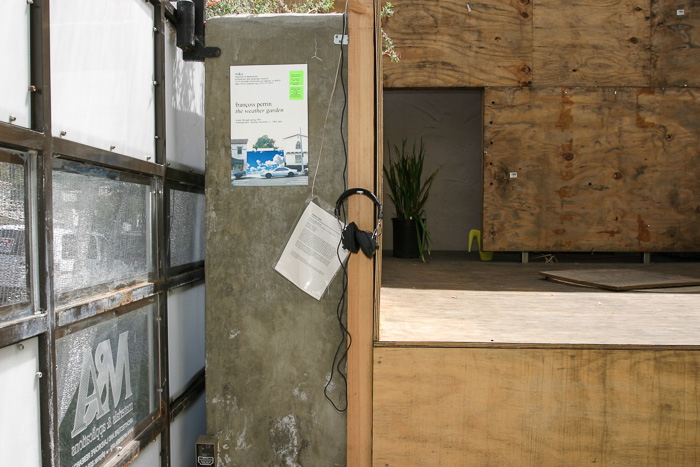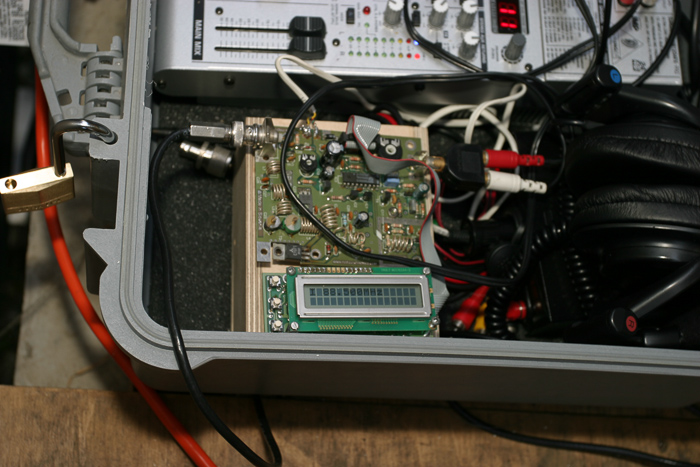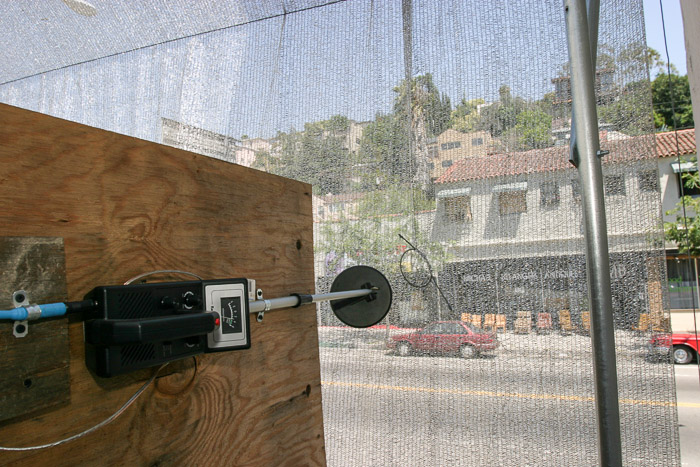Steve Rowell
Weather Radio
2005
Currents of air that pass through the garden are registered in the metallic mesh that surrounds and covers the Weather Garden and detected by three mounted sensors, referencing height, width, and length. As this mesh changes in shape, its volume becomes dynamic – never static. Signals from the sensors are then broadcast via FM transmitter back into the atmosphere as an impression of this volume. A series of small radio receivers will provide sound to visitors to the garden while drivers on Silver Lake Blvd. can tune their car radios to listen on approach and departure.
The result is a complex, but instantaneous and invisible series of detections, translations, transmissions, and receptions. The sensors themselves operate by transmitting radio waves to detect changes in magnetic fields. These changes are translated into modulating sound waves and fed through circuitry to a transmitter and antenna that radiate a cloud of energy into the atmosphere through architecture, cars, and bodies in search of reception. Ephemeral in nature, this energy quickly dissipates into the ether unless captured by a properly tuned receiver and converted into a form that we can hear. The muted visuals of architecture are given a soundtrack when layered with this audible impression of the Weather Garden.








As the Weather Garden draws attention to atmosphere, the Weather Radio installation detects and broadcasts it. This project is a response to the challenges of representing physical space with sound. If the elemental planes are the subjects then ether is the medium.
Sensor/sound/radio installation set inside Françoise Perrin's Weather Garden architectural installation.
Materials & Applications, Los Angeles, 2005.
The broadcast operated 24 hours a day from noon, May 8 though May 22, 2005. Visitors to the Weather Garden heard the audio from noon-8pm via installed radios. Drivers and passerbys were able to tune to 88.5 FM at any time.